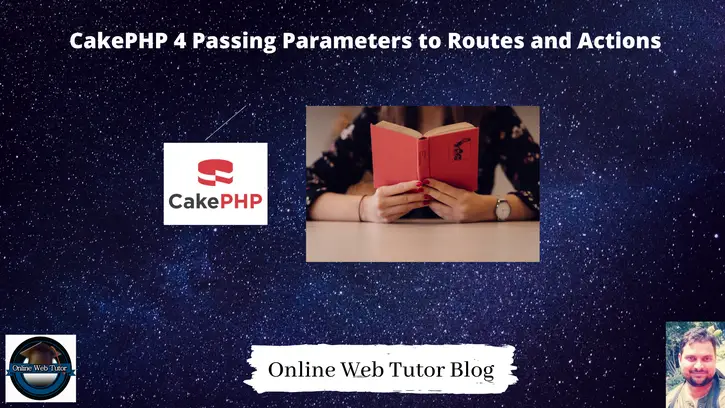Inside this article we will see CakePHP 4 Passing Parameters to Routes and Actions. Article contains very classified information about reading parameters values from URLs in CakePHP application.
Examples of Route Parameters are –
/4
/library-page
/101/cakephp-4To get access over these values or to work in proper way for parameterized routing in cakephp we have a step by step process. These is some route configuration which needs to be added while creating route with parameters.
Learn More
- CakePHP 4 How To Create Migrations For Database
- CakePHP 4 How To Get Query String Parameters Tutorial
- CakePHP 4 How To Link CSS Stylesheet Files To Layout
- CakePHP 4 How To Rename Table Using Migration
Let’s get started.
CakePHP 4 Installation
To create a CakePHP project, run this command into your shell or terminal. Make sure composer should be installed in your system.
$ composer create-project --prefer-dist cakephp/app:~4.0 mycakephp
Above command will creates a project with the name called mycakephp.
Create Route with Parameters
Open routes.php from /config folder.
//...
$routes->scope('/', function (RouteBuilder $builder) {
$builder->connect(
'/products/:id',
['controller' => 'Sample', 'action' => 'index'],
["pass" => ["id"]]
);
});
//...
We can see we have added parameter into route as –
'/products/:id'
OR
'/products/{id}'Also, we have added this id into [“pass” => [“id”]]. Alternatively we can set parameters using setPass() method.
So, we can write an alternative syntax of Route with Parameter as –
//...
$routes->scope('/', function (RouteBuilder $builder) {
$builder->connect(
'/products/{id}',
['controller' => 'Sample', 'action' => 'index']
)->setPass(["id"]);
});
//...
Access Parameter to Actions
Inside controller actions, we will have the simple process to access the value.
<?php
declare(strict_types=1);
namespace App\Controller;
class SampleController extends AppController
{
public function initialize(): void
{
parent::initialize();
}
public function index($id)
{
echo $id; // id value of Route
// your code
}
}
We can see we are getting $id value into index() method.
Alternative way to get access over parameter value –
echo $this->request->getParam("id");<?php
declare(strict_types=1);
namespace App\Controller;
class SampleController extends AppController
{
public function initialize(): void
{
parent::initialize();
}
public function index()
{
echo $this->request->getParam("id");
// your code
}
}
Pattern Settings for Route Parameters
In case you want to restrict the URL route values, then this concept will help you. For example – id value will only integer. So if we pass any string value in place of it, then it will give an exception like may be MissingController.
Setting URL value for Integers only
//...
$routes->scope('/', function (RouteBuilder $builder) {
$builder->connect(
'/products/{id}',
['controller' => 'Sample', 'action' => 'index'],
["pass" => ["id"], "id" => "[0-9]+"]
);
});
//...
Alternative syntax to write is as –
//...
$routes->scope('/', function (RouteBuilder $builder) {
$builder->connect(
'/products/{id}',
['controller' => 'Sample', 'action' => 'index'],
["pass" => ["id"]]
)->setPatterns(["id" => "[0-9]+"]);
});
//...
Passing More Route Parameters
We can extend the same syntax to pass parameters into route into a new level –
//...
$routes->scope('/', function (RouteBuilder $builder) {
$builder->connect(
'/products/{id}/{name}',
['controller' => 'Sample', 'action' => 'index'],
["pass" => ["id", "name"]]
)->setPatterns(["id" => "[0-9]+"]);
});
//...
We hope this article helped you to learn about CakePHP 4 Passing Parameters to Routes and Actions Tutorial in a very detailed way.
If you liked this article, then please subscribe to our YouTube Channel for PHP & it’s framework, WordPress, Node Js video tutorials. You can also find us on Twitter and Facebook.
Read more